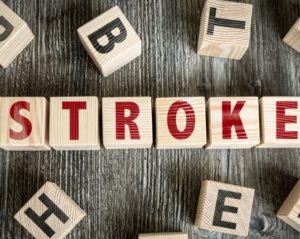I would call her up and ask very very specifically what the efficacy of this rehab is and how many hours to get to that efficacy. No knowledge means they don't have any fucking clue how it works or how to use it properly. And would the water treadmill be better?
underwater treadmill
Or the air pressure treadmill?
Air pressure treadmill instantly sheds 80% of your weight
I hated the zero gravity ones because by taking off the weight the spasticity in my legs made walking that much worse. So ask her what the objective diagnosis starting point for people that this will work for. If there is no starting diagnosis then they are just throwing rehab at patients and hoping some will stick.
How Rehab Hospital’s Zero Gravity System Helps Stroke Victims
 Stroke
is one of the leading causes of death in the United States. When a
stroke doesn’t take a life, it often leaves a person’s life changed
forever, suffering from short-term and/or long-term mental and physical
deficits. Though each person’s post-stroke conditions are unique, many
experience loss of movement, balance, coordination, loss of memory and
other cognitive or physical functions.
Stroke
is one of the leading causes of death in the United States. When a
stroke doesn’t take a life, it often leaves a person’s life changed
forever, suffering from short-term and/or long-term mental and physical
deficits. Though each person’s post-stroke conditions are unique, many
experience loss of movement, balance, coordination, loss of memory and
other cognitive or physical functions.Following a stroke, rehabilitation is the most important factor in determining recovery and long-term outcomes. Rehabilitation focuses on retraining the brain and the body and can help stroke victims regain their independence and live the highest quality of life possible.
However, one of the biggest forces patients face during the recovery process is gravity. The weight, even just an arm or leg, of a patient’s own body can be one of the biggest challenges of recovery after a stroke.
Gravity and body weight makes recovery more difficult for stroke and brain injury survivors because muscles are weak, balance is shaky and gravity is constantly pulling downward. Those who lack neuromuscular control because of a stroke, brain injury, orthopedic surgery or other conditions cannot always counteract this force.
Fortunately, state-of-the-art rehabilitation equipment is now being used to create less-weight, zero-gravity conditions. This technology aims to reduce the gravitational pull and force on the body. Less gravity (just think of the astronauts on the Moon) makes it easier to move, use and retrain the muscles. Recovery can start to happen much more quickly and fully.
Anti-gravity technology provides advanced exercise and functional-task therapies for rehabilitation. These systems are a great solution for stroke patients who are looking to regain mobility and focused movement, develop strength and increase range of motion and natural movement – all while minimizing stress on the mind and body.
Unlike traditional treadmills that require some amount of stability, strength and coordination to use, the anti-gravity approach lets patients with little to no strength and balance start redeveloping muscles, without fear of falling.
Anti-gravity machines are a great tool for rehabilitation experts such as physical and occupational therapists because they provide a no-barrier, hands-on, safe way to guide patients’ recovery and to precisely track progress. And, because these machines make it easier and safer for unstable patients, most patients report feeling more engaged and motivated during rehab.
How the ZeroG Gait and Balance System Works
ZeroG’s robotic, body-weight support system is mounted to a motorized trolley that rides along an overhead track. The lifting system removes some or all of a patient’s body weight, making it easier for weak muscles to relearn walking, standing, sitting and other basic tasks and functions.
To begin therapy, a therapist secures a patient into a comfortable harness that is attached to the ZeroG robot. The amount of support is individualized for each patient, depending upon the patient’s ability and strength.
Because ZeroG prevents falls, it can provide patients with greater confidence during therapy. Systems like the ZeroG help patients feel successful as they progress back to functional tasks they could do before the stroke, injury, surgery or illness.
Some of the therapeutic activities that ZeroG can be used for include walking, balance exercises, sit-to-stand transitions, walking up and down stairs or over uneven terrain, stepping over floor obstacles, reaching and using assistive devices such as canes, walkers or crutches.
Patients with the following conditions may be able to use the ZeroG treatment: strokes, balance disorders, orthopedic injuries, traumatic brain injuries, spinal cord injuries, amputation, paralysis, Cerebral Palsy, Multiple Sclerosis, Muscular Dystrophy, Parkinson’s disease, neurological injuries, cardiac patients in early recovery and more.
The highest quality rehabilitation care is available right here in Northern Arizona – no need to leave home. The Rehabilitation Hospital of Northern Arizona, which is a part of the Ernest Health system, is the only rehabilitation hospital in the region, serving all of Northern Arizona.
Located in Flagstaff on McMillian Mesa, the 40-bed rehabilitation hospital provides intensive rehabilitation services to people recovering from disabling diseases or injuries, such as strokes, brain, spinal cord and orthopedic injuries. Short-term rehab focuses on rebuilding strength, retraining muscles, regaining speech and rewiring the brain. Treatment plans are individualized and all patients participate in a minimum of three hours of physical, speech and occupational therapy a day. FBN
By Sydnie Bahl, PT, DPT, DPO
For more information, visit rhna.ernesthealth.com, call 928-774-7070, and/or follow on Facebook at Rehabilitation Hospital of Northern Arizona.
Sydnie Bahl, P.T., D.P.T., is the director of therapy operations at the Rehabilitation Hospital of Northern Arizona.
No comments:
Post a Comment